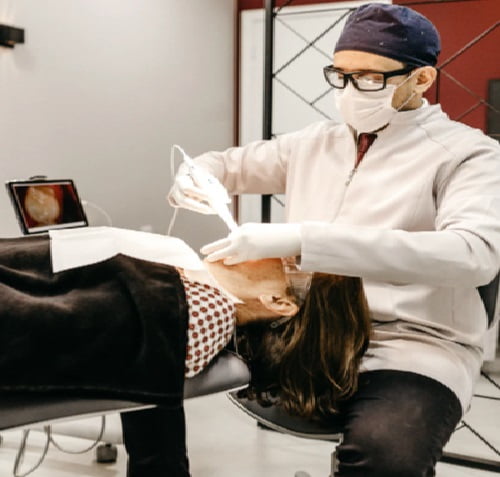Sometimes, tooth extraction is a necessary evil. It can be necessary in cases of irreparable damage, overcrowding, tooth infections, and when wisdom teeth can’t fit the mouth. If you’re going to undergo tooth extraction, all you really need to know is that your dental surgeon will loosen and remove your affected teeth under general or local anaesthetic (depending on the quantity of teeth being removed). For the aftermath, your surgeon will place a gauze over the affected area(s) to encourage clotting and regulate bleeding. If you’re feeling anxious about your upcoming appointment, know that there’s light at the end of the red lane. Read on to learn more about the tooth extraction aftercare period—and if /when you’ll require further dental intervention.
Days 1–2
You wouldn’t think that recovery would have associated goals, but days 1 and 2 are all about forming a blood clot. This is one of the few times we would encourage blood clot formation in the body.
Take extra care of your oral health during this time. Whilst light bleeding is normal, more fluent bleeding will require further dental treatment. Here are some further tips for this particular aftercare period:
Rest up: For the first 24 hours following the procedure, you should be resting.
Have your own gauze stash: To form your blood clot, leave the original gauze in your mouth for a number of hours. Once you’ve built this foundation, you can then change the gauzes as needed.
Don’t rinse, spit, smoke, or use straws: Doing any of the above will bring pressurised liquid into the mouth and likely compromise your forming blood clot. The more you resist the urge to gargle, expel liquid, light up, or consume liquid in concentrated doses, the quicker your recovery period will be.
Don’t be sick: This isn’t always avoidable—of course—and if the aim is to avoid bringing pressure into the mouth, then any outgoing vomit will spell ‘game over’. But if you’re the ‘other’ type of sick—or even if you’re not not sick at all—avoid blowing your nose, and try to swallow your sneezes. If you had a top tooth extracted, such actions will bring immense pressure and—you guessed it—likely disrupt your forming blood clot.
Don’t shy away from pain relief or cold compresses: Over-the-counter paracetamol or ibuprofen can be useful for tooth extraction aftercare. Ice packs or a pack of frozen peas can help when applied at 10–20-minute intervals.
Sleep slightly upward: Use bonus pillows when sleeping. Lying flat allows blood to pool and potentially compromises the healing process.
Take any dentist-recommended medications: Doctors’ orders are sacred. Ensure to take all medications the dentist prescribes and recommends to you.

See if cold compresses can help with the pain.
Days 3–10
Achievement unlocked: you have formed your blood clot! Now it’s time to treat yo’ mouth* to help prevent other issues. (*This is not to be confused with ‘treat yo’ self’, which is often in the opposite interests of oral hygiene.) Give your mouth some extra TLC between days three and ten of the aftercare process by:
Rinsing with saline: Now that you’ve made it to phase 2, rinsing is allowed again—in fact, it’s encouraged. Rinsing with saline (or warm water with a pinch of salt) can help kill mouth bacteria and consequently prevent infections. Ensure to start rinsing only once the clot has formed.
Resuming regular brushing and flossing practices: Brush and floss to your heart’s content, so long as you avoid direct contact with the affected area. Saline and mouthwash should clean this area sufficiently enough.
Eating like someone who can’t chew: During this phase of the aftercare, you’ll be on a soft food diet. Do eat soup, yoghurt, smoothies, mashed potato—or even baby food, if that appeals to you. Do not eat crunchy foods like toast, nuts, seeds, or chips.

So definitely don’t do this. You can have the pureed version (applesauce).
Day 10 onwards
If 10 days have passed and you’re still experiencing issues, this is a sign of a larger problem. If you’re experiencing any of the following after day 10, it is important that you seek further dental advice:
- Pain, swelling and/or bleeding that increases (rather than decreases) with time.
- Nausea or vomiting.
- Persistent pain that affects the ear.
- Foul-smelling or tasting drainage originating from the wound.










